Best of the Badmen

Brief Synopsis
Cast & Crew
William D. Russell
Robert Ryan
Claire Trevor
Jack Buetel
Robert Preston
Walter Brennan
Film Details
Technical Specs

Synopsis
At the conclusion of the Civil War, Jeff Clanton, an Army major from Missouri, persuades the last of the Confederacy's Quantrill's Raiders to give themselves up and pledge their allegiance to the Union. Many of the Raiders are infamous wanted men, including the Younger brothers, Jesse and Frank James, Curley Ringo and "Doc" Butcher, a veteran horse thief. Although Jeff promises that they will be paroled as long as records indicate they were on the Confederacy's payroll, Matthew Fowler, a carpetbagger who runs a powerful detective agency, determines to arrest them for the reward money. While Fowler and Joad, the sheriff of Breckenridge, the Missouri town in which the Raiders are being held, stir up sentiment against the outlaws, Jeff races to issue the allegiance pledge. Before they can say the pledge's last words, one of Fowler's deputies shoots and wounds Bob Younger, prompting Jeff to return fire. Jeff then completes the oath and frees the Raiders. Later, as he is about to return to his home, the now-civilian Jeff is arrested for murdering Fowler's deputy. Fowler claims that Jeff knew he had been mustered when he was issuing the oath and therefore shot his man as a civilian. Jeff is tried by a prejudiced court and sentenced to be hanged the following morning. While Jeff sits in jail that night, however, Fowler's estranged wife Lily pretends to be Jeff's rejected lover and, to spite her husband, distracts the jailer long enough to slip Jeff a gun. Jeff escapes but is pursued by a posse and shot in the leg. Joad eventually catches up to the wounded Jeff, but as he is about to take Jeff prisoner, Doc and Bob surprise the lawman and free Jeff. Doc explains that because Fowler connived to have Jeff's allegiance oath declared illegal and the Raiders are now fugitives, they have all embraced a life of crime. Doc and Bob, who lost the use of his arm after being shot by Fowler's deputy, lead Jeff to Quinto, a town in an lawless area known as Badman's Territory. Jeff is surprised to discover Lily singing in the Quinto saloon, but promises to keep her identity a secret. Jeff, the Younger brothers, the James brothers, Doc and Ringo vow to destroy Fowler by robbing banks and other businesses that are protected by his detectives. As hoped, the raids overwhelm Fowler's operation, but Lily worries that Jeff, with whom she is in love, has become heartless. Jeff denies he has changed, insisting that he only wants to finish the job he started. When Cole Younger, the Raiders' leader, suggests that they blow up a gold-carrying train, Jeff proposes a less violent plan, then tells Lily that he will leave Quinto with her after the robbery. Later, Ringo, who like Bob is infatuated with Lily, becomes jealous when Bob gives her some jewelry and instigates a fight. Jeff and the others stop the brawl, but Ringo, who had eavesdropped on Lily's private conversation with Jeff, exposes her as Fowler's wife. Although Jeff defends Lily and forces Ringo out of Quinto, the other outlaws demand Lily's expulsion. To avoid trouble, Lily arranges to meet up with Jeff in three days, then accompanies him and the gang to the train depot. Unknown to the outlaws, a revenge-hungry Ringo has informed Fowler about Jeff's plan, so when Doc waves the train down, a horde of Fowler's men attack. Lily is wounded in the ensuing gunfight, but afterward, Cole accuses her of setting them up. Bob, Jeff, Lily and Doc flee in a wagon, and after eluding the gang, Bob hides out with Lily while Jeff and Doc steal a passing stagecoach. Before Jeff and Doc can pick up Lily, however, Ringo surprises Bob and delivers Lily to Fowler. Although Jeff, Bob and Doc know that Fowler will be lying in wait for them in Breckenridge, they determine to rescue Lily. That night, after robbing a trading post of guns and dynamite, Bob and Jeff slip into Breckenridge, while Doc waits with the stage on the edge of town. Bob shoots Ringo, then Jeff sneaks into Fowler's rooms, where Lily is being kept. After freeing Lily, Jeff fights with Fowler and manages to push the carpetbagger into the path of Joad's bullet. Doc, having heard the signal--three blasts of dynamite--then races into town to pick up Bob, Lily and Jeff, and the foursome escapes. Later, on the trail, Bob and Doc part ways with Lily and Jeff, who are looking forward to a new life together.

Director
William D. Russell
Cast
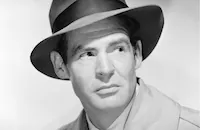
Robert Ryan

Claire Trevor
Jack Buetel

Robert Preston
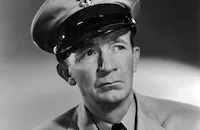
Walter Brennan
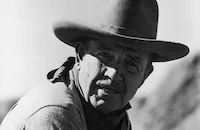
Bruce Cabot

John Archer
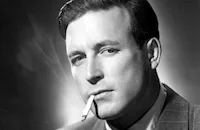
Lawrence Tierney
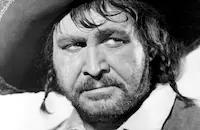
Barton Maclane
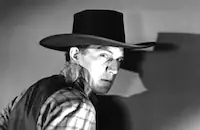
Tom Tyler

Bob Wilke
John Cliff
Lee Macgregor
Emmett Lynn
Carleton Young

Byron Foulger
Larry Johns
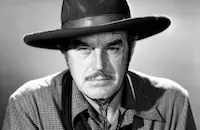
Harry Woods
William Tannen
Ed Max
David Mcmahon
Everett Glass
Crew
Robert Hardy Andrews
Robert Hardy Andrews
C. Bakaleinikoff
Mel Berns
Samuel Bischoff
James Casey
John Cass
Carroll Clark
Edward Cronjager
Francis Cugat
Albert S. D'agostino
Larry Germain
Desmond Marquette
Jack Mills
Clem Portman
Paul Sawtell
Herman Schlom
Darrell Silvera
R. M. Stults
John Twist
Michael Woulfe

Film Details
Technical Specs

Articles
Best of the Badmen
In the aftermath of the Civil War, Union officer Jeff Clanton (Ryan) has the dicey responsibility of shepherding a collection of the most dangerous bushwhackers that had ever ridden with Quantrill's Raiders. Among the names destined for future notoriety were those of Frank and Jesse James (Tom Tyler, Lawrence Tierney), Cole and Bob Younger (Bruce Cabot, Jack Beutel), and the Ringo Kid (John Archer). Clanton has offered the rousted renegades amnesty in exchange for a loyalty oath and the hanging up of their guns.
While the rebels are amenable, Clanton's overture galls the zealous federal agent Matthew Fowler (Robert Preston), who'd much rather slaughter them and collect the considerable bounties on their heads. When Clanton uncovers Fowler's intention, the duplicitous detective frames him on a murder rap. The scheming so sickens Fowler's estranged wife Lily (Trevor) that she engineers Clanton's escape from the lock-up. Now riding with his former charges as a fellow outlaw, Clanton leads the pack on attacks on banks and trains under Fowler's protection, all to flush him out for a final confrontation.
Though his distinguished career was marked by many noteworthy sagebrush stories like The Naked Spur (1953), Hour of the Gun (1967) and The Wild Bunch (1969), the iconoclastic ex-boxer Ryan bore a private distaste for the genre. It never showed up in his work, however, and his rugged presence provided a more than serviceable fulcrum for Best of the Badmen. Trevor got the chance to provide a slightly softer edge unlike the tough cookies she so often played in film noirs. The cast also benefits from Walter Brennan as a renegade-sympathizer horse doctor, and Barton MacLane as Fowler's flunky.
In his analysis Showdown: Confronting Modern America in the Western Film (University of Illinois Press), John H. Lenihan deemed the film unique because its "alienated outlaw figures are neither killed nor totally won over to the ways of social respectability...[Clanton] intends to turn himself in, but at the end of the film offers his best wishes to two of his less scrupulous comrades, one of whom says he will prospect for gold in California and other that there is also gold a lot closer, at the Denver Mint."
Producer: Samuel Bischoff, Herman Schlom
Director: William D. Russell
Screenplay: Robert Hardy Andrews, John Twist
Cinematography: Edward Cronjager
Film Editing: Desmond Marquette
Art Direction: Carroll Clark, Albert S. D'Agostino
Music: Paul Sawtell
Cast: Robert Ryan (Jeff Clanton), Claire Trevor (Lily), Jack Beutel (Bob Younger), Robert Preston (Matthew Fowler), Walter Brennan (Doc Butcher), Bruce Cabot (Cole Younger).
C-84m.
by Jay S. Steinberg

Best of the Badmen
TCM Remembers - Lawrence Tierney
A SCREEN TOUGH GUY WHO WAS MEANER THAN A JUNKYARD DOG
Lawrence Tierney, one of the screen's toughest tough guys, died February 26th at the age of 82. He first startled audiences with his impassioned work in the 1940s but Tierney's rowdy off-screen life eventually pushed him out of the limelight. Though he kept working in small parts, Tierney found a new generation of fans with a few memorable roles in the 80s and 90s.
Tierney was born March 15, 1919 in Brooklyn, New York. He grew up in New York and was a track star in school before becoming interested in acting. (His two brothers also became actors though they changed their names to Scott Brady and Ed Tracy.) He went through the usual period of stage appearances before getting bit parts in little-remembered films. His first credited role was in Sing Your Worries Away (1942) but Tierney quickly made his mark playing the title role in Dillinger (1945). A string of memorable roles followed in films like San Quentin (1946), The Devil Thumbs a Ride (1947), Born to Kill (1947) and the Oscar-winning circus drama from director Cecil B. DeMille, The Greatest Show on Earth (1952) in which Tierney played the villain responsible for the epic train wreck toward the film's conclusion. However, Tierney had a knack for real-life trouble and was arrested several times for disorderly conduct and drunken driving. By the end of the 50s he only found sporadic acting work, sometimes not working for several years between films. During this period his best-known work was in Custer of the West (1967) and Andy Warhol's Bad (1977).
Slowly in the 1980s, Tierney landed small but frequently noticable parts in Hollywood films such as Prizzi's Honor (1985) and The Naked Gun (1988). He appeared on TV shows like Hill Street Blues, Star Trek: The Next Generation and Seinfeld (as Elaine's father). In 1992 that changed when Quentin Tarrantino cast Tierney as the crime boss in Reservoir Dogs, an unforgettable part that gave him new fans. While the subsequent roles or films didn't get any bigger, Tierney was finally a recognized name. One of his oddest roles was the half-hour Red (1993) based on the infamous mid-70s Tube Bar tapes where a real-life bar owner responds with startlingly over-the-top remarks to prank phone calls. (If that sounds familiar it's because The Simpsons based Moe's responses to prank calls on these tapes. Tierney provided a voice in the 1995 Simpsons episode "Marge Be Not Proud.") Tierney's last film appearance was in Armageddon (1998)!
By Lang Thompson
CHUCK JONES, 1912 - 2002
Animator Chuck Jones died February 22nd at the age of 89. Jones may not have boasted quite the name recognition of Howard Hawks or John Ford but he was unquestionably one of the greatest American directors. His goals might have been primarily to entertain, which he did so wonderfully that his 50 and 60 year old cartoons seem fresher than most anything produced in the 21st century. But Jones displayed a sense of movement, timing and character barely equalled elsewhere. Literary critics have a saying that while there are no perfect novels there are certainly flawless short stories. Several of Jones' cartoons reach a perfection that Hawks and Ford could only have dreamed about.
Jones was born September 21, 1912 in Spokane, Washington but grew up in Hollywood. As a child he would watch films by Charlie Chaplin and others being made in the streets, absorbing the process and supposedly even appearing as an extra in Mack Sennett shorts. After graduating from L.A.'s Chouinard Art Institute (now California Institute of the Arts), Jones started selling pencil drawings on street corners. He soon landed a job in 1932 with ground-breaking animator Ub Iwerks as a cel washer (somebody who removes ink from the expensive celluloid frames so they could be reused). The following year Jones began to work for Leon Schlesinger Productions which was sold to Warner Brothers. There he directed his first film, The Night Watchman in 1938.
Jones would stay at Warners for almost 25 years until it closed the animation division. Here is where Jones did some of his most-beloved work, putting Bugs Bunny, Daffy Duck, the Road Runner, Marvin Martian and numerous others through many of their most memorable exploits. Who can forget Bugs and Daffy's hilariously convoluted arguments about hunting season in Rabbit Seasoning (1952) and Duck Rabbit Duck (1953)? Or the Coyote's tantalized, endless pursuit of the Road Runner? What's Opera Doc? (1957) sending Elmer and Bugs to Bayreuth? A cheerfully singing and dancing frog that, alas, only performs for one frustrated man? Daffy tormented by the very elements of the cartoon medium in Duck Amuck (1953)? That's only a fraction of what Jones created while at the Warners animation studio, affectionately known as Termite Terrace. This building on the Warners lot boasted an array of individualist talents that Jones, like Duke Ellington, could pull into a whole. There was voice artist Mel Blanc's impeccable timing, writer Michael Maltese's absurdist love affair with language, music director Carl
Stalling's collaged scores and perhaps best of all a studio that knew enough to just leave the gang alone so long as the cartoons kept coming.
After Warners shuttered its animation division in 1962, Jones moved to MGM where he worked on several Tom & Jerry cartoons, his inimitable lines always immediately apparent. In 1966 he directed How the Grinch Stole Christmas from Dr. Seuss' book, one of the finest literary adaptations. A feature version of Norman Juster's classic The Phantom Tollbooth followed in 1969. Along with his daughter Linda, Jones was one of the first to see the value of original animation art and in the late 70s began a thriving business. (For more info see http://www.chuckjones.com.) Jones made cameo appearances in Joe Dante's Gremlins (1984) and Innerspace (1987). In 1989, he wrote a touching and funny memoir, Chuck Amuck, that's pretty much essential reading.
Jones won an Best Short Subject Cartoons Oscar for The Dot and the Line (1965), having earlier been nominated twice in 1962. His Pepe LePew film For Scent-imental Reasons (1949) and public-health cartoon So Much for So Little also won Oscars though not for Jones himself. In 1996 he was awarded an honorary Oscar "for the creation of classic cartoons and cartoon characters whose animated lives have brought joy to our real ones for more than a half century."
By Lang Thompson
GEORGE NADER, 1921 - 2002
Actor George Nader, best known for the B-movie anti-classic Robot Monster, died February 4th at the age of 80. One-time co-star Tony Curtis said, "He was one of the kindest and most generous men I've ever known. I will miss him." Nader was born in Pasadena, California on October 19, 1921 and like many other actors started performing while in school. His first film appearance was the B-Western Rustlers on Horseback (1950) and he made other appearances, often uncredited, before the immortal Robot Monster in 1953. This dust-cheap, charmingly inept film (originally in 3-D!) features Nader as the father of Earth's last surviving family, everybody else having been wiped out by a gorilla in a diving helmet. Shortly after, Nader landed major roles in RKO's Carnival Story (1954) and with Curtis in Universal's Six Bridges to Cross (1955), bringing a beefy charm that earned him numerous fans. As a result, in 1955 Nader shared a Golden Globe for Most Promising Male Newcomer. He then appeared in numerous lower profile studio films before closing out the decade playing Ellery Queen in a short-lived TV series. He relocated to Europe in the sixties where he found steady work. As secret agent Jerry Cotton, he made a series of spy thrillers which earned him a cult reputation in Europe, starting with Schusse aud dem Geigenkasten (aka Operation Hurricane: Friday Noon) (1965). The eighth and final entry in the series was Dynamit in gruner Seide (aka Dynamite in Green Silk) (1968). His film career ended in the mid-70s when a car wreck damaged his eyes so that he could no longer endure a film set's bright lights. Nader began writing novels, most notably the recently reprinted Chrome (1978), an acclaimed science fiction novel with openly gay characters.
By Lang Thompson
TCM REMEMBERS HAROLD RUSSELL, 1914 - 2002
Oscar-winning actor Harold Russell died January 29th of a heart attack at age 88. As a disabled veteran whose hands had been amputated in The Best Years of Our Lives (1946), Russell won Best Supporting Actor but also an honorary award "for bringing hope and courage to his fellow veterans." This made Russell the only person to receive two Oscars for the same role. Russell was born in Nova Scotia on January 14, 1914 but grew up in Cambridge Massachusetts. He joined the US Army after the attack on Pearl Harbor and while training paratroopers lost both hands in an accidental explosion. He then made a training film where director William Wyler saw Russell. Wyler was so impressed that he changed the character in The Best Years of Our Lives from a man with neurological damage to an amputee so that Russell could play the part. After winning the Oscar, Russell followed Wyler's advice and went to college, eventually running a public relations company and writing his autobiography. He made two more film appearances, Inside Moves (1980) and Dogtown (1997), and appeared in a few TV episodes of China Beach and Trapper John MD. Russell made waves in 1992 when he decided to sell his acting Oscar to help cover expenses of his large family. The Motion Picture Academy offered to buy the statue for $20,000 but it sold to an anonymous bidder for $60,000. About the other statute, Russell said, "I'd never sell the special one. The war was over, and this was the industry's way of saying thank you to the veterans."
By Lang Thompson
TCM Remembers - Lawrence Tierney
Quotes
Do what I tell you and you'll always go wrong.- Lily
We knew a place where the climate was cool. Way down there between Oklahoma and Texas. A little town of Quinto in the Cimarron sand hills. Badman's Territory they called it. Cherokee Strip where they rigged civil law that carpetbaggers couldn't stick their claws in, and the Army wouldn't waste the powder. Plenty of fellas vacationed there. Mostly fast gun-hands who didn't like the smell of rope.- Doc Butcher
Trivia
Notes
Voice-over narration, spoken by Walter Brennan as his character "'Doc' Butcher," is heard intermittently during the film. In July 1949, Hollywood Reporter announced that Jack Gross would be producing Best of the Badmen and that Randolph Scott, who had appeared in the 1948 RKO "outlaw" picture Return of the Bad Men, would star. Although not a "prequel," the 1946 RKO release Badman's Territory was also set in the lawless town of Quinto and featured some of the same outlaw characters as Best of the Badmen (see AFI Catalog of Feature Films, 1941-50). Scott and Robert Ryan co-starred in the 1946 film. According to Hollywood Reporter news items, location shooting for Best of the Badmen took place in Kanab, UT. In late June 1950, Hollywood Reporter announced that director William D. Russell was scouting locations in the southwestern part of Colorado, but it is not known whether any filming actually took place there.
Some of the film's characters are loosely based on real people. For information about Quantrill's Raiders, see the entry for the 1940 Republic film Dark Command in the AFI Catalog of Feature Films, 1931-40. For information about the James brothers, see entry for the 1939 Twentieth-Century Fox film Jesse James in the AFI Catalog of Feature Films, 1931-40. For information about the Younger brothers, see entry for the 1941 Warner Bros. release Bad Men of Missouri in the AFI Catalog of Feature Films, 1941-50.














